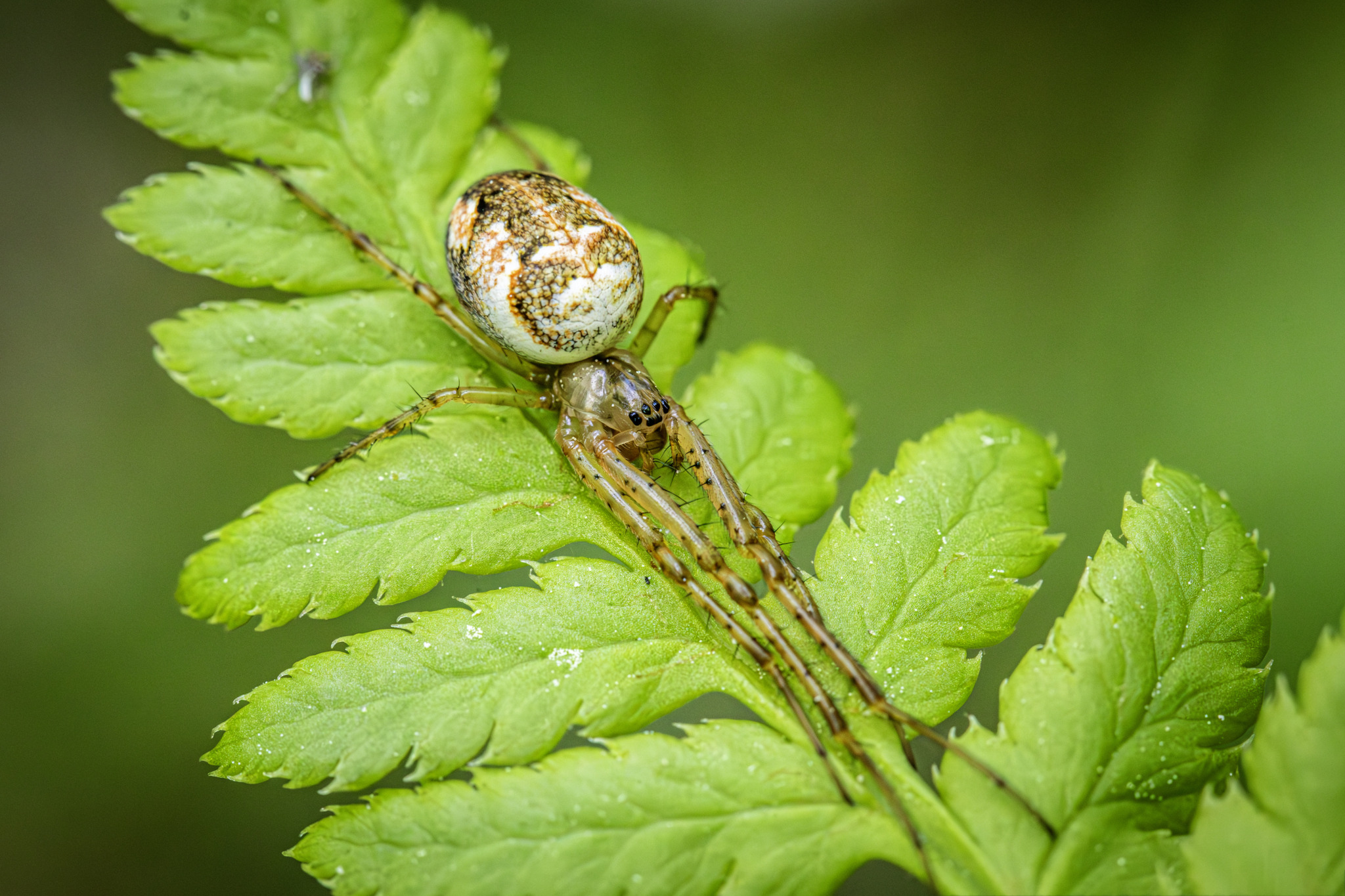The Orb-Weaver Spider (Metellina mengei) is a species of spider in the family Tetragnathidae, known for their distinctive orb-shaped webs. Here are some key features and characteristics of Metellina mengei:
Appearance
- Size: Metellina mengei is a small to medium-sized spider. Females typically measure about 5-7 millimeters in body length, while males are slightly smaller, about 4-5 millimeters.
- Color: The body coloration of Metellina mengei varies but is generally a mix of yellow, brown, and greenish hues. The abdomen often has a characteristic pattern with a light-colored center and darker sides.
- Morphology: Like other orb-weavers, they have relatively long legs compared to their body size. The first pair of legs is often longer and more robust, which aids in web construction and prey capture.
Habitat
- Preferred Habitats: Metellina mengei is typically found in moist and shaded environments. Common habitats include woodlands, forest edges, hedgerows, and gardens. They are often found near water sources like streams and ponds.
- Web Location: These spiders build their orb-shaped webs in low vegetation, bushes, and sometimes on man-made structures. The webs are usually built close to the ground.
Behavior
- Web Construction: The orb web is a characteristic feature, typically constructed in the evening or at night. The web consists of a series of radiating spokes connected by a spiral of sticky silk.
- Feeding: Metellina mengei primarily preys on flying insects that get trapped in its web. When an insect becomes ensnared, the spider quickly moves to immobilize it with silk before delivering a venomous bite.
- Diurnal Activity: Unlike some other orb-weavers that are more nocturnal, Metellina mengei can often be seen sitting in the center of its web during the day.
Life Cycle
- Mating: Males approach females cautiously for mating to avoid being mistaken for prey. After mating, females lay eggs in silken sacs, which they often attach to vegetation or hide in secluded spots.
- Development: Spiderlings hatch from the eggs and disperse by ballooning—releasing silk threads that catch the wind and carry them to new locations. They undergo several molts as they grow to maturity.
Conservation Status
- Metellina mengei is not considered endangered and is relatively common in suitable habitats. Their presence is indicative of a healthy ecosystem as they play a role in controlling insect populations.
Interesting Facts
- Sexual Dimorphism: There is noticeable sexual dimorphism in Metellina mengei, with females being larger and males having more elongated legs relative to their body size.
- Spider Silk: The silk produced by Metellina mengei, like other orb-weavers, is incredibly strong and elastic, making it highly effective for trapping prey.
Identifying Metellina mengei
- Comparison with Similar Species: Metellina mengei is often confused with its close relative, Metellina segmentata. One distinguishing feature is the time of year they are most commonly found—Metellina mengei is more often seen in spring and early summer, while Metellina segmentata is typically observed in late summer and autumn.
In summary, the Orb-Weaver Spider (Metellina mengei) is a small but distinctive spider known for its orb-shaped web and preference for moist, shaded habitats. It plays a crucial role in ecosystems by controlling insect populations and showcasing the intricate behavior of web construction and prey capture.
Visited 201 times, 24 visit(s) today
Views: 334
Subscribe to the newsletter:
